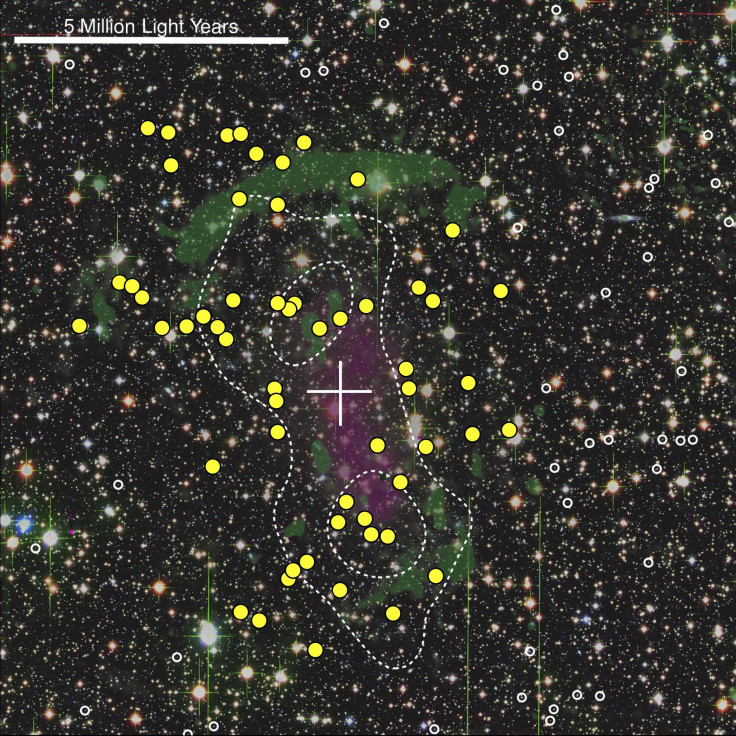Giant 'Shockwaves' Can Reanimate Dead Galaxies Briefly, Trigger Fresh Star Formation

Giant shockwaves created during collisions of galactic clusters can awaken galaxies that stopped forming stars in the distant past, according to two new studies published in the Monthly Notices of the Royal Astronomical Society. However, the stars formed as a result of these collisions are extremely short-lived, exploding as a supernova in a span of just a few million years.
“Much like a teaspoon stirring a mug of coffee, the shocks lead to turbulence in the galactic gas,” Andra Stroe of the Leiden Observatory in the Netherlands, a co-author of the studies, said, in a statement. “These then trigger an avalanche-like collapse, which eventually leads to the formation of very dense, cold gas clouds, which are vital for the formation of new stars.”
Galactic clusters are regions of the universe containing anywhere between hundreds to thousands of galaxies. Every cluster of galaxies in our cosmic neighborhood is believed to have undergone collisions, resulting in eventual mergers, in the past. However, given the sheer size of these clusters, collisions were not believed to have had any effect on their component galaxies.
“We assumed that the galaxies would be on the sidelines for this act, but it turns out they have a leading role,” Stroe added.
For the purpose of this study, the researchers observed the merging galaxy cluster CIZA J2242.8+5301, nicknamed the “Sausage.” They saw that the galaxies in the cluster were triggered into action by a passing shockwave -- a finding that contradicted earlier theories.

However, as the study found, this “resurrection” is temporary.
“The explosions drive huge amounts of gas out of the galaxies and with most of the rest consumed in star formation, the galaxies soon run out of fuel,” co-author David Sobral from Leiden and the University of Lisbon, said, in the statement.
The end products of these collisions, if you wait long enough, are galaxies that are redder and deader than ever before.
“They slip back into a coma and have little prospect of a second resurrection,” Sobral added, in the statement.
© Copyright IBTimes 2024. All rights reserved.





















